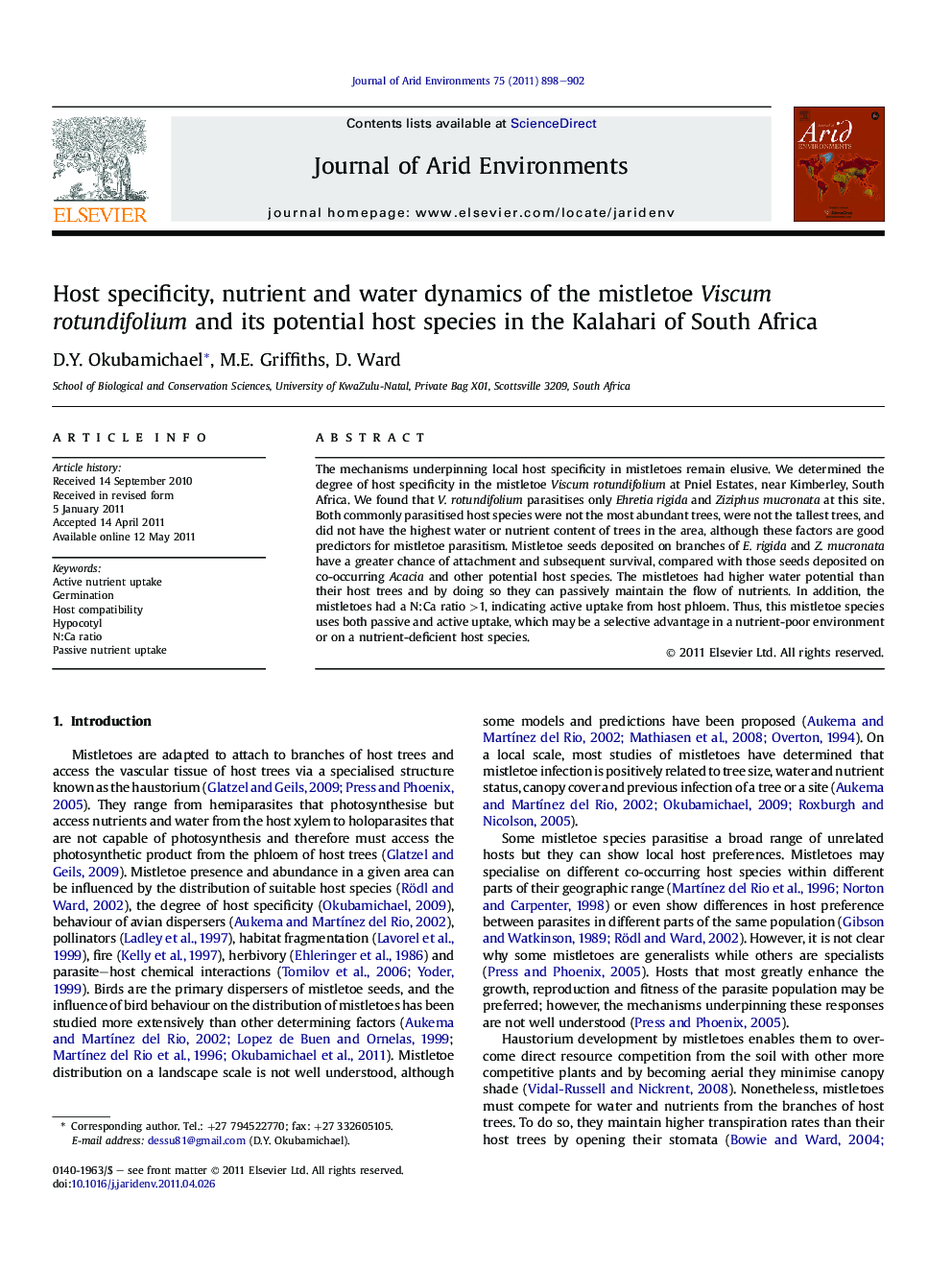| کد مقاله | کد نشریه | سال انتشار | مقاله انگلیسی | نسخه تمام متن |
|---|---|---|---|---|
| 4393643 | 1305496 | 2011 | 5 صفحه PDF | دانلود رایگان |

The mechanisms underpinning local host specificity in mistletoes remain elusive. We determined the degree of host specificity in the mistletoe Viscum rotundifolium at Pniel Estates, near Kimberley, South Africa. We found that V. rotundifolium parasitises only Ehretia rigida and Ziziphus mucronata at this site. Both commonly parasitised host species were not the most abundant trees, were not the tallest trees, and did not have the highest water or nutrient content of trees in the area, although these factors are good predictors for mistletoe parasitism. Mistletoe seeds deposited on branches of E. rigida and Z. mucronata have a greater chance of attachment and subsequent survival, compared with those seeds deposited on co-occurring Acacia and other potential host species. The mistletoes had higher water potential than their host trees and by doing so they can passively maintain the flow of nutrients. In addition, the mistletoes had a N:Ca ratio >1, indicating active uptake from host phloem. Thus, this mistletoe species uses both passive and active uptake, which may be a selective advantage in a nutrient-poor environment or on a nutrient-deficient host species.
► Viscum rotundifolium is locally host specific at Pniel Estates.
► Haustorium formation is host specific.
► Host chemical cues may direct host specificity in mistletoes.
► Mistletoes may use both passive and active nutrient uptake.
Journal: Journal of Arid Environments - Volume 75, Issue 10, October 2011, Pages 898–902